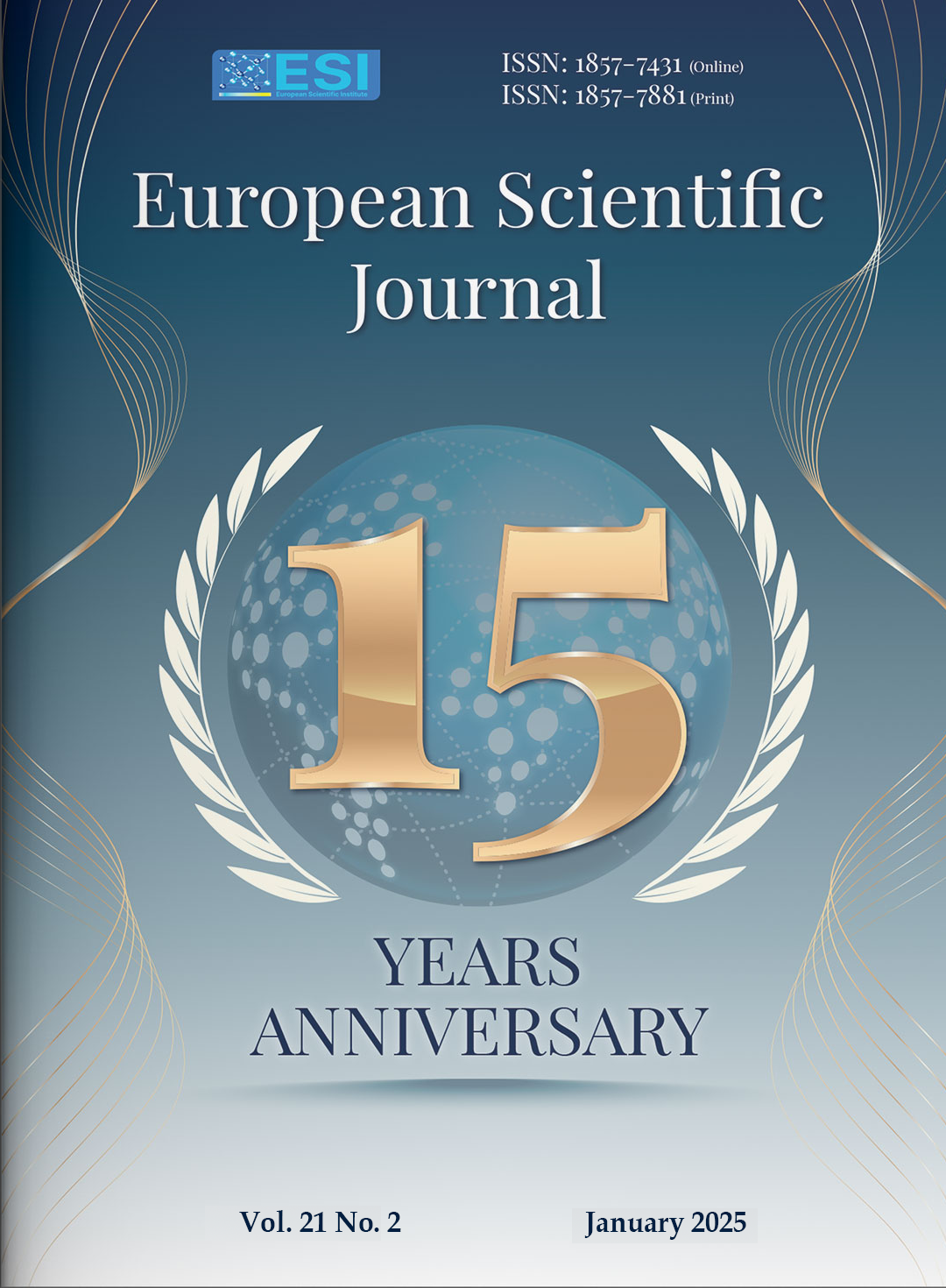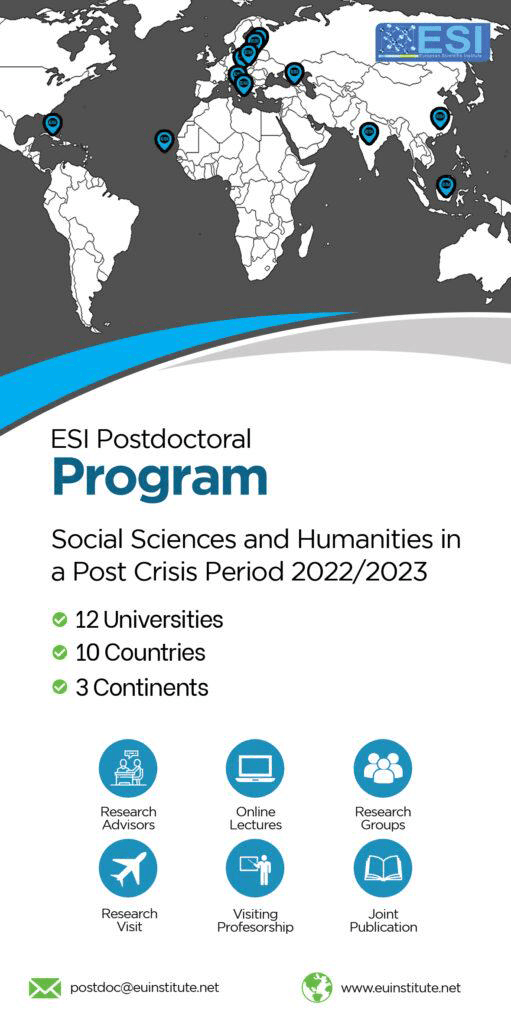Autobiographical narrations of sexual harassment on online blogs as tools for Egyptian women’s empowerment: a linguistic and critical analysis
Abstract
Sexual violence against women is still a global and pervasive problem (International Institute for Global Health, 2019), especially in male-controlled countries like Egypt. These days, an increasing number of Egyptian women is using autobiographical narrations on online blogs to condemn negative ideologies and misogynist practices in their society, denouncing episodes of sexual harassment that they have experienced or witnessed. In this study, it has been observed how they use language on blogs to recount their own experiences of sexual abuse. A sample of five autobiographies retrieved from the Egyptian blog Speak Up has been selected for the purpose of this investigation. These stories have been linguistically and critically analysed through Halliday’s functional grammar (2014) and a Critical Discourse Analysis (Machin & Mayr, 2023), more specifically a Feminist Critical Discourse Analysis (Lazar, 2007), with the aim of observing how personal female identities and empowerment are performed through this form of first-person narration (Lazar, 2006; Bamberg, 2010; Schiffrin et al., 2010). A special focus has been on verbal and semiotic choices, which suggest agency, transitivity, and power relationships, and on appraisal elements which give information about the narrators’ “feelings and opinions” (Derewianka & Jones, 2016, p. 25). The analysis has proved to be useful in showing how these Egyptian women narrators consciously or unconsciously present themselves as “empowered victims”.
Downloads
Metrics
PlumX Statistics
References
2. Abdelmonem, A. (2015). Reconceptualizing sexual harassment in Egypt: A longitudinal assessment of el-Taharrush el-Ginsy in Arabic online forums and anti-sexual harassment activism. Kohl: A Journal for Body and Gender Research, 1(1), 23–41. https://doi.org/10.36583/kohl/1-1/
3. EAbdelmonem, A. (2016). Anti-sexual harassment activism in Egypt: Transnationalism and the cultural politics of community mobilization [Doctoral dissertation, Arizona State University]. https://keep.lib.asu.edu/items/154438
4. Abdelmonem, A., & Galán, S. (2017). Action-oriented responses to sexual harassment in Egypt: the cases of HarassMap and WenDo. Journal of Middle East Women's Studies,13 (1), 154–167. https://doi.org/10.1215/15525864-3728767
5. Abirafeh, L. (2020). Foreword. In The Arab Institute for Women, Islamic feminism and Arab family laws perspectives from Morocco, Egypt and Lebanon (pp. 4-5). Lebanese American University.
6. Abrahão, M. H. M. B. (2012). Autobiographical research: memory, time and narratives in the first person. European Journal for Research on the Education and Learning of Adults, 3(1), 29–41. https://doi.org/10.3384/rela.2000-7426.rela0051
7. Abuzaid, R. A., & Sultan, Y (2022). On social networks, anonymous testimonies, and other tools of feminist activism against sexual violence in Egypt. Journal of Middle East Women’s Studies, 18(2), 301–310. Project MUSE, https://muse.jhu.edu/article/863381
8. Al-Rahman Ismail, D. A., & Abdurrahman, I. B. (2024). A linguistic analysis of an inspirational autobiographical success story of technology. Journal of Language Studies, 8(6), 248–263. https://doi.org/10.25130/Lang.8.6.15
9. Allemandou, S. (2017, December 18). Female emancipation in Egypt 'can only come from Egyptian women'. France24. https://www.france24.com/en/20171218-women-rights-egypt-emancipation-egyptian-feminists-sisi
10. Alvi, H. (2015). Women's rights movements in the 'Arab Spring': Major victories or failures for human rights?. Journal of International Women’s Studies, 16(3), 294–318. https://vc.bridgew.edu/jiws/vol16/iss3/19
11. Aragbuwa, A, (2021). Discursive strategies and resistance ideologies in victims’ narratives in Stella Dimoko Korkus’ Domestic violence diary 1-4: A Critical Discourse Analysis. Ghana Journal of Linguistics, 10(1), 251–275. http://dx.doi/10.4314/gjl.v10il.10
12. Auf, O. (2024, June 14). Egyptian women speak against the unspoken. The Cairo Review of Global Affairs. https://www.thecairoreview.com/midan/egyptian-women-speak-against-the-unspoken
13. Bamberg, M., & Georgakopoulou, A. (2008). Small stories as a new perspective in narrative and identity analysis. Text & Talk, 28(3), 377–396. https://doi.org/10.1515/TEXT.2008.018
14. Bamberg, M. (2010). Who am I? Narration and its contribution to self and identity. Theory & Psychology, 21(1), 1–22. https://doi.org/10.1177/0959354309355852
15. Bielecka-Prus, J. (2014). Discursive analysis of auto/biographical narratives on the basis of prison camp literature. In M. Kafar, & M. Modrzejewska-Świgulska (Eds.), Autobiography, biography, narration. Research practice for biographical perspectives (pp. 43–60). Jagiellonian University Press.
16. Bouachrine, I. (2022). Anthem of misogyny: the war on women in North Africa and the Middle East. The Rowman & Littlefield Publishers.
17. Brockmeier, J., & Varbaugh, D. (2001). Narrative and identity: Studies in autobiography, self and culture. John Benjamins Publishing Company.
18. Bruner, J. (1987). Life as narrative, Social Research, 54, 11–32. https://www.jstor.org/stable/40970444
19. Carrell, M. R., Elbert, N.F., Hatfield, R. D., Grobler, P. A., Marx, M., & Van De Schyf, S. (2018). Human resource management in South Africa (6th ed.). Cengage Learning Emea.
20. Center of Arab Women for Training and Research. (2018). Women’s political participation in Egypt. Barriers, opportunities and gender sensitivity of select political institutions. Organisation for Economic Co-operation and Development (OECD). https://www.cawtarclearinghouse.org/en/conventions-instruments/womens-political-participation-in-egypt-barriers-opportunities-and-gender-sensitivity-of-select-political-institutions-july-2018-mena-
21. Cochrane, L., Zeid, Y., & Sharif, R. (2019). Mapping anti-sexual harassment and changing social norms in Egypt. ACME: An International Journal for Critical Geographies, 18(2), 394–420. https://doi.org/10.14288/acme.v18i2.1745
22. Cuesta, M. (2011). How to interpret autobiographies. Razón y Palabra, 76. http://www.redalyc.org/articulo.oa?id=199519981027
23. Derewianka, B., & Jones, P. (2016). Teaching language in contexts (2nd ed.). Oxford University Press.
24. Downes, N. (2018, September 25). Listen to Her! Egypt's women fight for their rights. UCL News. https://www.ucl.ac.uk/news/2018/sep/listen-her-egypts-women-fight-their-rights
25. Earls, J. (2017). Global intersections: A history of women's liberation in Egypt [Honors Theses]. Portland State University.
26. El-Ashmawy, N. (2017). Sexual harassment in Egypt: Class struggle, state oppression, and women’s empowerment. Hawwa, 15(3), 225–256. https://doi.org/10.1163/15692086-12341328
27. Elbeblawy, B. (2021, July 15). Gaslighting, harassment & misogyny: The life of a teenage girl in Egypt. African Women Rights Advocates. https://awra-group.org/gaslighting-sexual-harassment-and-misogyny-the-life-of-a-teenage-girl-in-egypt/
28. Fonioková, Z. (2020). What's in an I? Dissonant and consonant self-narration in autobiographical discourse, Biography, 43(2), 387–406. https://dx.doi.org/10.1353/bio.2020.0034
29. Gebhard, M., & Accurso, K. (2012). Systemic Functional Linguistics. In M. Vande Berg, R. M. Paige, & K. H. Lou (Eds.), Student learning abroad: What our students are learning, what they’re not and what we can do about it (pp. 1029–1037). Stylus.
30. Ghoussoub, M. (1987). Feminism - or the eternal masculine - in the Arab world. New Left Review, I(161). https://newleftreview.org/issues/i161/articles/mai-ghoussoub-feminism-or-the-eternal-masculine-in-the-arab-world.pdf
31. Hafez, S. (2012). No longer a bargain: Women, masculinity, and the Egyptian uprising. American Ethnologist, 39(1), 37–42. https://doi.org/10.1111/j.1548-1425.2011.01344.x
32. Halliday, M. A. K. (2014). Halliday’s introduction to functional grammar (4th ed.). Routledge.
33. Hammad, H. (2017). Sexual harassment in Egypt: an old plague in a new revolutionary order. GENDER - Zeitschrift für Geschlecht, Kultur und Gesellschaft, 9(1), 44–63. https://doi.org/10.3224/gender.v9i1.04
34. Hamzeh, M. (2022). Women resisting sexual violence and the Egyptian revolution. Arab feminist testimonies. Bloomsbury Publishing.
35. Haspelmath, M. (1997). Indefinite pronouns. Oxford University Press. http://library.oapen.org/handle/20.500.12657/30819
36. Hildebrand, S. R. (2021). Autobiographical narratives of sexual violation: Trauma, genre, and the politics of telling [Unpublished doctoral dissertation]. The City University of New York.
37. Hollstein, B. (2019). What autobiographical narratives tell us about the life course. Contributions of qualitative sequential analytical methods. Advances in Life Course Research, 41, 1–11. https://doi.org/10.1016/j.alcr.2018.10.001
38. Ibrahim, A. (2019). Cyberactivism and empowerment: Egyptian women’s advocacy to combat sexual harassment. The Journal of Social Media in Society, 8(2), 167–186.
39. Internatinal Institute for Global Health. (2019). Sexual harassment: A global problem. United Nations University (UNU) Collections. www.iigh.unu.edu
40. Khorshid, S. (2021, January 27). The unlikely success of Egypt’s 2011 revolution: A revived women’s movement. Atlantic Council. https://www.atlanticcouncil.org/blogs/menasource/the-unlikely-success-of-egypts-2011-revolution-a-revived-womens-movement/
41. La Causa, L. (forthcoming). Censorship and identity in Arabic subtitling of American films. In Z. Angela, G. Riboni, & M. Nartey, (Eds.) Identities and diversity in audiovisual products (Special Issue). I-Land Journal.
42. Lazar, M. (2006). Discover The Power of femininity!. Feminist Media Studies, 6(4), 505–517. https://doi.org/10.1080/14680770600990002
43. Lazar, M. (2007). Feminist Critical Discourse Analysis: Articulating a feminist discourse praxis, Critical Discourse Studies, 4(2), 141–164. https://doi.org/10.1080/17405900701464816
44. Machin, D., & Mayr, A., (2023). How to do Critical Discourse Analysis. A multimodal introduction (2nd ed.). Sage.
45. Magdy, R. (2017, March 8). Egyptian feminist movement: a brief history. openDemocracy. https://www.opendemocracy.net/en/north-africa-west-asia/egyptian-feminist-movement-brief-history/
46. Maher, H. (2022, August 11). Campus femicides in Egypt revive calls to strengthen laws against gender-based violence. abcNEWS. https://abcnews.go.com/International/campus-femicides-egypt-revive-calls-strengthen-laws-gender/story?id=88236869
47. Mansour, T. (2023, August 11). Male guardianship customs confine Egyptian women to patriarchy. The New Arab. https://www.newarab.com/features/male-guardianship-customs-bind-egyptian-women-patriarchy
48. Marzouk, A., & Vanderveen, G. (2022). Fighting sexual violence in Egypt on social media: A visual essay on assault police. An International Journal for Research, Policy and Practice, 17(10), 2329–2341. https://doi.org/10.1080/17441692.2021.1991972
49. Mendes, K., Keller, J., & Ringrose, J. (2019). Digitized narratives of sexual violence: Making sexual violence felt and known through digital disclosures. New Media & Society, 21(6), 1290–1310. https://doi.org/10.1177/1461444818820069
50. Miller, J., & White, N. (2003). Gender and adolescent relationship violence. Criminology, 41, 1207–1247. https://doi.org/10.1111/j.1745-9125.2003.tb01018.x
51. Moghadam, V. M. (2004). Patriarchy in transition: Women and the changing family in the Middle East. Journal of Comparative Family Studies, 35(2), 137–162. https://doi.org/10.3138/jcfs.35.2.137
52. Nadeem, N. (2015). Autobiographical narrative: An exploration of identity construction processes in relation to gender and race. Narrative Inquiry, 25(2), 224–241. https://doi.org/10.1075/ni.25.2.02nad
53. Park, K. (2019, April 21). The undiscussed backsliding of women’s rights in Egypt and Arab world. Ex Nemo. https://katrinpark.com/2019/04/21/womens-rights-egypt/
54. Perez, R. (2022, March 2). Patriarchal authoritarianism in Egypt: What women’s rights show about backsliding. DEC Democratic Erosion Consortium. https://www.democratic-erosion.com/2022/03/02/patriarchal-authoritarianism-in-egypt-what-womens-rights-show-about-backsliding/
55. Potter, S. (2017). Using Critical Discourse Analysis to understand power, personal agency and accountability in the Stanford rape case. Linguistics, 41(2), 1–31.
56. Praminatih, G. A., & Nafiah, H. (2022). A Critical Discourse Analysis of sexual harassment against women in online mass media. Journal of Arts and Humanities, 26(2), 198–205. https://doi.org/10.24843/JH.2022.v26.i02.p05
57. Saad, R., Abed, S.S. (2020). A revolution deferred: Sexual and gender-based violence in Egypt. In A. Okech (Eds.), Gender, protests and political change in Africa. Gender, development and social change (pp. 81–106). Palgrave Macmillan. https://doi.org/10.1007/978-3-030-46343-4_5
58. Sadler, N. (2019). Myths, masterplots and sexual harassment in Egypt. The Journal of North African Studies, 24(2), 247–270. https://doi.org/10.1080/13629387.2017.1419872
59. Samari, G. (2019). Women’s empowerment in Egypt: the reliability of a complex construct. Sexual and Reproductive Health Matters (SRHM), 27(1), 146–159.
60. Schiffrin, D., DeFina, A., & Nylund, A. (2010). Telling stories: Language, narrative, and social life. Georgetown University Press. https://repository.library.georgetown.edu/bitstream/handle/10822/709194/978-1-58901-629-3.pdf?sequence=1&isAllowed=y
61. Sika, N., & Khodary, Y. (2012). One Step Forward, Two Steps Back? Egyptian women within the confines of authoritarianism. Journal of International Women’s Studies, 13, 91–100.
62. Sloan, A. (2014, August 27). Egypt's deep-seated culture of sexism. MEMO Middle East Monitor. https://www.middleeastmonitor.com/20140827-egypts-deep-seated-culture-of-sexism/
63. Smith, S., & Watson, J. (2010). Reading autobiography. A Guide for interpreting life narratives (2nd ed.). University of Minnesota Press.
64. Sorbera, L. (2014). Challenges of thinking feminism and revolution in Egypt between 2011 and 2014. Postcolonial Studies, 17(1), 63–75. http:/ / dx.doi.org/ 10.1080/ 13688790.2014.912193
65. UN Women report (2013). Study on ways and methods to eliminate sexual harassment in Egypt. https://s3-eu-west-1.amazonaws.com/harassmap/media/uploaded-files/287_Summaryreport_eng_low-1.pdf
66. Wael, R. (2018). #FirstTimeIwasHarassed. Hashtag testimonies of child-sexual violence. HarassMap. https://s3-eu-west-1.amazonaws.com/harassmap/media/HarassMap%20Egypt/final-report-2compressed.pdf
67. Weatherall, A. (2002). Gender, language and discourse. Routledge.
Copyright (c) 2025 Lucia La Causa

This work is licensed under a Creative Commons Attribution 4.0 International License.








